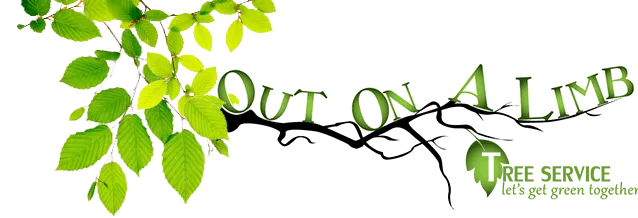
Greater Chattanooga Area tree services
Rooted Wisdom Blog

How to Safely Prepare Your Trees for Severe Weather
Greetings, fellow residents of the greenest neighborhoods! Imagine this: a tree-lined avenue, swaying gently in the breeze, providing shade in the summer heat. Now, hold that image. What if we told you that you have the opportunity to ensure that this picturesque scene remains intact even after a storm?
We get it, life is busy, and tree care might not always be on your radar. You want your property to look its best without constant worry. Severe weather, however, can be a menace, and without the right preparations, it can turn your serene landscape into a mess. We’re not just tree experts; we’re tree enthusiasts. We’ve transformed countless residential landscapes into storm-ready havens. Our methods aren’t just tried and true; they’re rooted in years of experience and a genuine passion for helping your trees thrive. When we talk about tree preparation, we speak from hands-on knowledge.
Ready to be the protector of your own arboreal haven? Reading this article isn’t just about learning to weather the storm; it’s about seizing the opportunity to ensure that your outdoor sanctuary remains intact, no matter the weather forecast. By the end of this read, you’ll have a toolkit of insights to keep your trees safe and sound, creating an oasis of green tranquility in the face of even the fiercest storms. Ready to dive in and safeguard your green companions? Let’s embark on this journey to fortify your trees for the storms ahead!
Prune Dead or Weak Branches
Pruning dead or weak branches involves the careful removal of damaged or lifeless parts of a tree. These branches can be a potential hazard during storms and severe weather. Dead or weak branches are more likely to break and fall during heavy winds or storms, posing a threat to people, property, and the tree itself. By removing these branches, you enhance the tree's overall health and reduce the risk of damage during severe weather events.
How to Prune Dead or Weak
Branches Inspect the tree: Regularly examine your trees for signs of dead or weak branches, such as lack of leaves, cracks, or hanging branches.
Use proper tools: Ensure you have the right tools, like sharp pruning shears or saws, to make clean cuts. Make careful cuts: Trim back to healthy, living wood using the three-cut method for larger branches.
Maintain tree balance: While pruning, maintain the tree's natural shape and balance to promote healthy growth.
Pruning dead or weak branches is a proactive measure that not only safeguards your trees but also helps ensure their resilience during severe weather conditions.
Maintain Proper Tree Structure
Maintaining proper tree structure involves shaping and supporting the growth of trees to ensure strong and balanced branches and a sturdy trunk. Trees with proper structure are better equipped to withstand the impact of severe weather, such as heavy winds and storms. A well-structured tree is less likely to experience branch failure or uprooting during adverse conditions.
How to Maintain Proper Tree Structure
Early Training: Start when the tree is young by pruning for a central leader (single main trunk) and well-spaced lateral branches.
Regular Pruning: Trim away competing branches that could lead to weak attachments, using proper pruning techniques.
Remove Weak Crotches: Eliminate branches with narrow V-shaped angles as they are prone to splitting.
Support Systems: Install tree supports like cables and braces for larger branches to prevent them from breaking under the stress of severe weather.
Professional Evaluation: Engage an arborist to assess the tree's structure and recommend necessary adjustments.
Maintaining proper tree structure is an investment in the long-term health and safety of your trees, ensuring they stand strong even in the face of challenging weather conditions.
Ensure Proper Tree Health
Ensuring proper tree health involves regular care and attention to the overall well-being of your trees, including addressing issues that might compromise their strength and vitality. Healthy trees are better prepared to endure severe weather. A tree with strong roots, vibrant foliage, and optimal nutrient levels can better withstand the stress of storms, high winds, and other harsh conditions.
How to Ensure Proper Tree Health
Regular Pruning: Remove dead or diseased branches to prevent the spread of infections and improve air circulation.
Mulching: Apply a layer of organic mulch around the tree's base to retain moisture, regulate soil temperature, and suppress weed growth.
Watering: Provide adequate and consistent watering, especially during dry periods, to maintain optimal hydration levels.
Fertilization: Feed trees with appropriate nutrients to promote healthy growth and development.
Pest and Disease Management: Regularly inspect trees for signs of pests and diseases, and promptly address any issues.
Soil Care: Keep the soil well-drained and aerated to support root health.
Professional Care: Consult with an arborist for expert advice on tree care, disease prevention, and overall health assessment.
By prioritizing proper tree health, you are enhancing your trees' ability to endure severe weather events, promoting longevity, and contributing to the beauty and value of your landscape.
Protect Young or Vulnerable Trees
Safeguarding young or vulnerable trees is essential to ensure their survival and resilience during severe weather conditions. Young trees and those with weaker structures are more susceptible to damage from strong winds, heavy rains, and other weather-related stressors. By implementing protective measures, you can give these trees a better chance at thriving..
How to Protect Young or Vulnerable Trees
Staking: Install tree stakes and ties to provide support and prevent swaying during storms.
Tree Wraps: Use tree wraps to shield the trunks from potential damage caused by extreme temperatures, sunscald, or pests.
Windbreaks: Plant windbreaks, such as shrubs or other trees, around young trees to create a barrier against strong winds.
Pruning: Remove any dead or diseased branches to minimize the risk of breakage during severe weather.
Arborist Consultation: Seek advice from a certified arborist for tailored strategies to protect specific tree species.
Protecting young or vulnerable trees requires a proactive approach, but the investment in their well-being will yield long-term benefits for your landscape's aesthetic and environmental value.
Assess and Address Potential Hazards
Conducting a thorough assessment of potential hazards related to trees on your property is a crucial step in preparing for severe weather. Identifying potential hazards, such as overhanging branches, leaning trees, or weakened trunks, helps prevent accidents, property damage, and power outages during storms.
How to Assess and Address Potential Hazards
Visual Inspection: Regularly examine trees for signs of decay, disease, or structural instability. Look for cracks, splits, or visible rot.
Leaning Trees: Assess the angle of leaning trees. If a tree is significantly leaning, it might be at risk of falling and causing damage.
Overhanging Branches: Trim back branches that hang over buildings, power lines, or other structures. These branches can become hazardous during storms.
Weak Attachments: Check for branches with weak attachments to the trunk. Prune or remove these branches to reduce the risk of breakage.
Cavities: Inspect for cavities or hollow areas in the trunk. These can weaken the tree's structure and increase the risk of falling.
Root Health: Assess the health of the tree's roots. Trees with compromised root systems are more likely to fall during storms.
Professional Inspection: If in doubt, consult with a certified arborist. They can identify potential hazards and recommend appropriate actions.
Taking proactive steps to address potential hazards can significantly reduce the risk of damage and injury during severe weather events. Prioritizing safety by addressing these concerns will ensure your property and loved ones remain protected.
Be Storm-Ready with Proactive Tree Care
Preparing your trees for severe weather is an essential responsibility for any homeowner. By following these practical steps, you can safeguard your property, enhance safety, and promote the longevity of your trees. Remember, proactive tree care not only prevents potential hazards but also contributes to the overall health and beauty of your outdoor space.
At Out On A Limb For You, we understand the importance of tree care and safety. Our experienced team is here to assist you in ensuring your trees are ready to withstand any weather challenges. Call us at (706) 524-8288 TODAY for a comprehensive assessment, expert advice, and professional tree care services. Let's work together to keep your trees strong and your property safe.
Keep Your Home and Yard Looking Beautiful All Year Round By Removing Dangerous and Unsightly Trees
Frequently Asked Questions
How do I know if a tree needs to be removed?
Signs that a tree may need to be removed include severe damage, extensive disease or decay, leaning or instability, proximity to structures or power lines, or a tree being dead or dying.
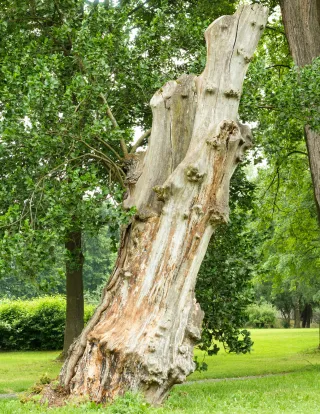
Can you help with insurance claims for tree services?
Absolutely. We are authorized to work insurance claims related to tree services, and we can assist you throughout the claims process.
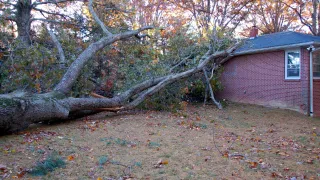
How can I prepare for tree services at my property?
We recommend clearing the area around the trees, ensuring access for our equipment, and informing us about any specific considerations or restrictions.
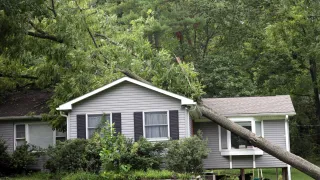
Are you licensed and insured?
Yes, we are a licensed and insured tree service company. Our team consists of trained professionals who adhere to industry standards and safety protocols.

What is the cost of tree removal?
The cost of tree removal can vary depending on factors such as tree size, location, complexity, and any additional services required. We offer free estimates to provide accurate pricing based on your specific needs.
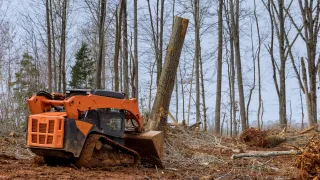
Can you remove a tree close to my house or other structures?
Yes, we have experience in safely removing trees near structures. Our trained professionals use specialized techniques and equipment to ensure the protection of nearby buildings during the removal process.
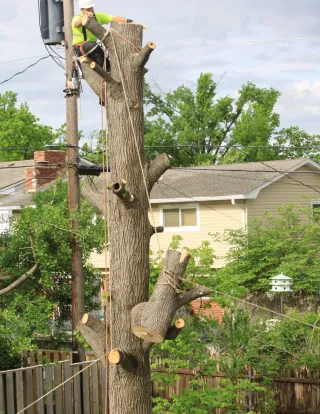
What measures do you take to ensure safety during tree services?
Safety is our top priority. Our team follows strict safety protocols, uses professional-grade equipment, and is trained in industry best practices to minimize risks and ensure a safe working environment.
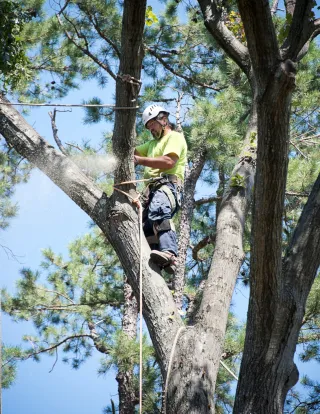
Do you offer free estimates?
Yes, we offer free estimates for our tree services. Contact us to schedule an appointment and discuss your specific needs.
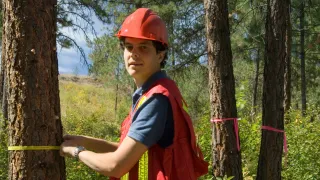
Proudly Serving the Greater Chattanooga and North Georgia areas including...
Chattanooga, Hixson, Signal Mountain, Cleveland, Ooltewah, Lookout Mountain, Red Bank, East Brainerd, East Ridge, Rossville, Chickamauga, Chattanooga Valley, Flintstone, Dalton, Fort Oglethorpe, Dalton, Rocky Face, Tunnel Hill, Rock Spring, LaFayette, and more.
© 2025. Out On A Limb For You, LLC. All rights reserved. Privacy Policy


